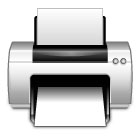|
PERINEAL CARE
Classification of perineal tears
Perineal tears are common following vaginal delivery. There are classified as follows:
-
1st degree – tear involving vaginal mucosa or perineal skin only
-
2nd degree – involves perineal muscles
-
3rd degree – involves external anal sphincter (EAS). This is further divided into 3A (less than 50% of EAS), 3B (more than 50% EAS) and 3C (full thickness anal sphincter tear)
-
4th degree – includes rectal mucosa
Obstetric risk factors for anal sphincter injury
Maternal factors
-
Primiparity
-
Instrumental delivery – higher with forceps than vacuum extraction
-
Prolonged second stage of labour
-
Epidural analgesia
-
Midline episiotomy
-
Previous anal sphincter injury
Fetal factors
-
Birth weight greater than 4kg
-
Shoulder dystocia
-
Persistent occipito-posterior position during labour
3rd and 4th degree tears are repaired in theatre under regional anaesthesia.
A course of antibiotic and laxatives is usually prescribed in these circumstances. Give NSAIDS for analgesia if not contraindicated.
Postnatal physiotherapy for 6 – 12 weeks is offered to help prevent incontinence
Complications of perineal tears
Early
-
Haemorrhage
-
Pain - may interfere with maternal-neonate bonding
-
Wound infection / breakdown
Late
-
Faecal incontinence
-
Urinary incontinence
-
Persistent perineal pain / dyspareunia
-
Fistula formation
-
Psychological sequelae
Care of the perineum
-
Pelvic floor exercises and analgesia are important
-
Use warm clean water to clean perineum. No difference in healing when alternative remedies such as adding salt and antiseptics to water are used.
-
Wash perineum after every visit to the toilet
-
Do not use hair dryer over perineum. Use of toilet paper to pad dry the stitches is adequate
-
To help keep area dry, the use of breathable materials e.g. cotton briefs is better than synthetic materials
-
If using sanitary pads, change them frequently to help prevent infection
-
If there is swelling, can use cold ice packs to help reduce swelling and discomfort
-
Local anaesthetic creams are available at chemists but are expensive
|

